The ongoing changes bring new challenges and opportunities to how we ensure and assess the security of electricity supply in the future.
The current changes taking place
The electric power system is largely hierarchical: There is a one-way power flow from centralized generation units, through the transmission grid and to the distribution grid, and the interaction between different grid levels is limited. But the transition has started to a more decentralized and complex power system with more distributed generation, active end-users, and reverse power flow at the distribution level (see Figure 1). It is generally acknowledged that the need for flexibility is growing, and flexible resources are increasingly being deployed in the distribution system as well as in the transmission system.
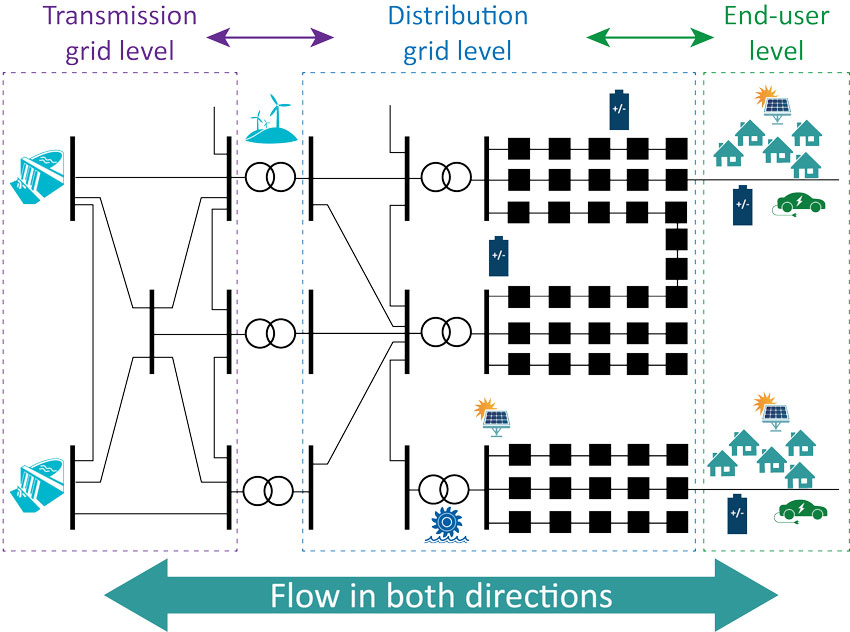
These ongoing changes in the power system may have implications for the security of electricity supply (SoS). The rapidly ongoing electrification of society makes it even more important to better understand these implications. Therefore, the research centre CINELDI has carried out a critical review of existing research on the impact that flexible resources may have on SoS. In this blog post, we summarize the findings and discuss the need for more holistic and comprehensive assessments of SoS considering flexible resources. We also discuss what it may mean for how SoS is managed in the future.
How do we understand security of electricity supply?
Security of electricity supply can be defined as the ability of the electric power system to supply end-users with electricity of a certain quality on a continuous basis. It can be understood as a concept that comprises four main aspects: 1) Energy availability, 2) power capacity, 3) reliability of supply, and 4) power quality. This four-way definition is illustrated in Figure 2.
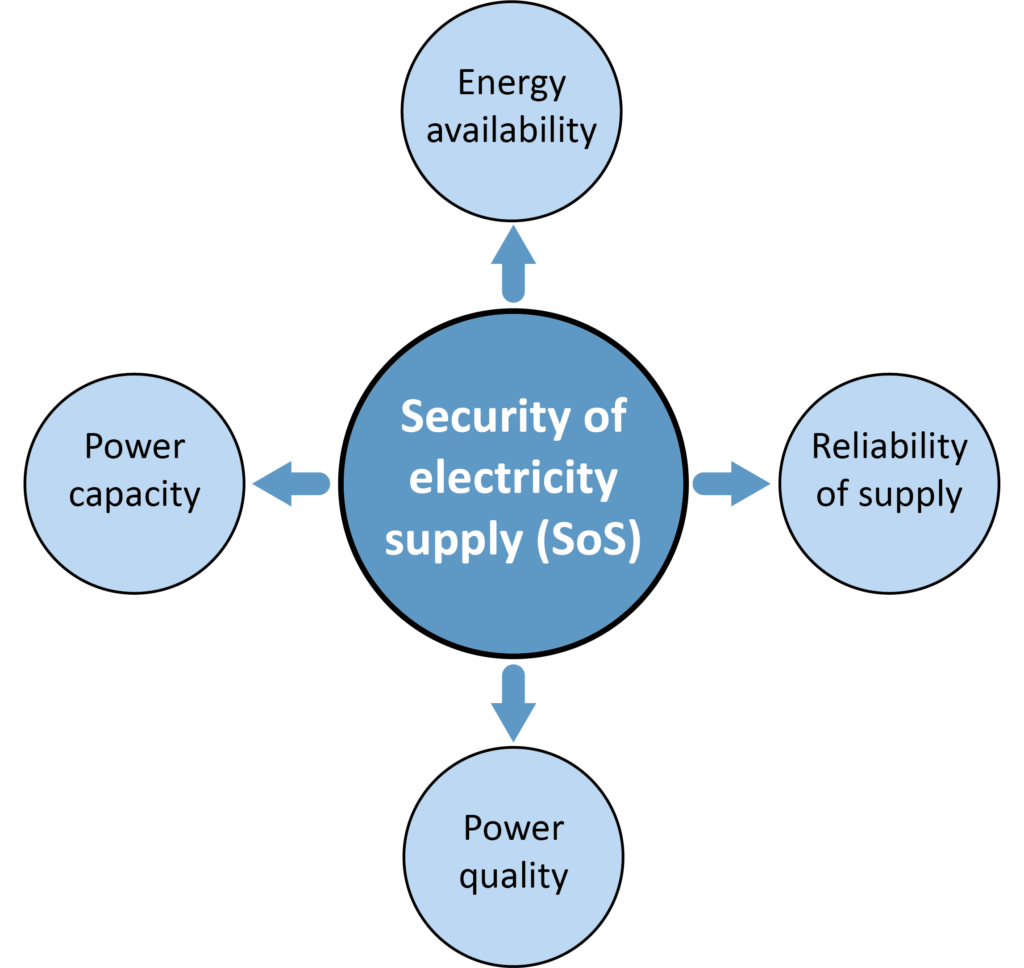
The aspect of reliability of supply is related to the frequency and duration of interruptions of power supply to end-users due to failures and unplanned outage occurrences in the power system. The aspect of power quality can be further classified in the voltage magnitude, the voltage waveform (the lack of distortions of a pure sinusoidal), and frequency quality (lack of deviation from 50 Hz, for example).
What do we mean by flexible resources?
The concept of flexibility in power systems can be defined in many ways. Broadly speaking, a flexible resource (or a flexibility resource) can modify generation injection and/or consumption patterns in order to provide a service within the power system. In this work we have focused on three types of flexible resources currently being introduced to distribution systems, as shown in the first part of Figure 4: 1) flexible loads (or demand response), 2) stationary energy storage systems, and 3) mobile energy storage systems (typically electrical vehicles).
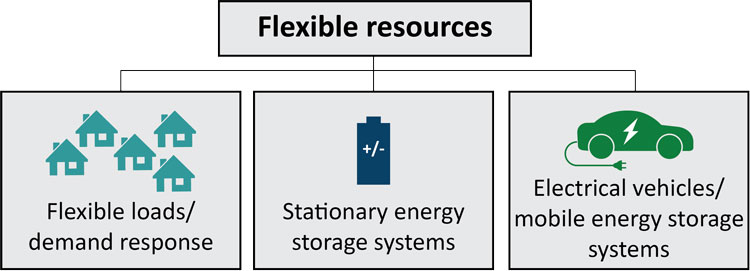
So, what is the relationship between flexible resources and security of supply? A prominent example in Norway are hydropower plants with reservoirs. They can modify generation both on long time scales (seasonally) to manage energy availability, and on short time scales (seconds-to-minutes) as corrective actions following unplanned outage occurrences in the power system. However, these flexible resources are mainly connected to the transmission grid level.
The trend is that distribution systems are becoming more similar to transmission systems: Distributed flexible resources introduce new degrees of freedom available to manage SoS also at the distribution grid level. Moreover, there is a transition from centralized to more decentralized generation and from one-way to two-way power flow, and the interaction between different grid levels is becoming more complex. As illustrated in the second part of Figure 4, a flexible resource at the end-user level (e.g. an electrical vehicle) may impact the security of supply at higher levels in the power system (e.g. through contributing to frequency regulation) as well as the end-user’s own security of supply (e.g. as a source of backup power).
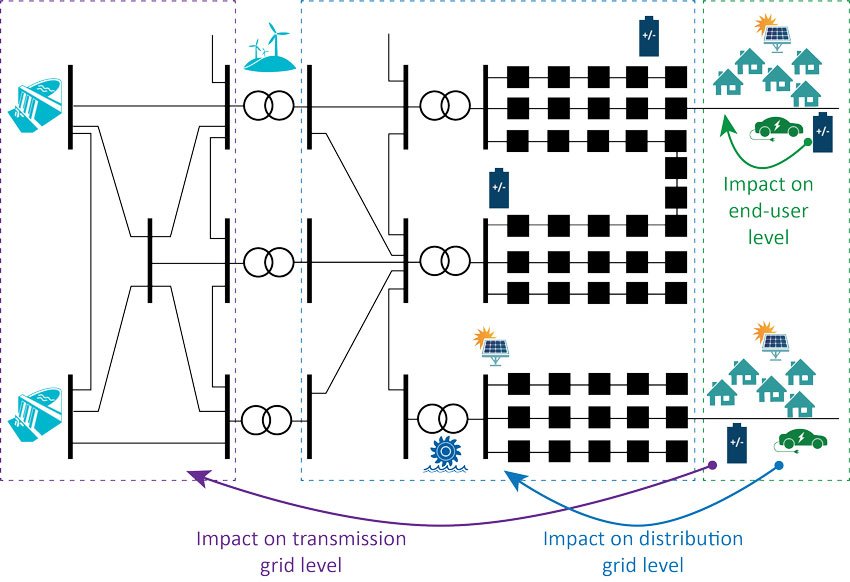
Why carry out a literature review?
This blog post presents the results of a literature review where we have considered hundreds of research works. The purpose of a literature study is to figure out what is already known from previous research and what one still does not know. In other words, the literature review should contribute to both summarize and structure existing knowledge and to identify knowledge gaps and needs for further research. In our case, we already knew that quite a lot of research had been carried out, but it appeared quite fragmented and was rarely done from a security of supply perspective. Therefore, a question we asked throughout the review was “how should one assess the security of electricity supply in the future?”, assuming that flexible resources in distribution systems will play a major role in future power systems.
How can flexible resources impact the security of electricity supply?
Our review shows how flexible resources in distribution systems can have a positive impact on several aspects of SoS: Energy storage systems, electrical vehicles and demand response can all provide services that benefit the reliability of supply, power quality and power capacity of the power system. Figure 5 classifies and summarizes the services related to security of supply that flexibility resources can provide. The beneficial SoS impact of a flexible resource is determined by characteristics such as its response time and service duration capabilities. The requirements depend on which aspect of SoS its services address and will be very different for fast frequency reserve provision (for example) compared to providing backup power supply during distribution grid outages.
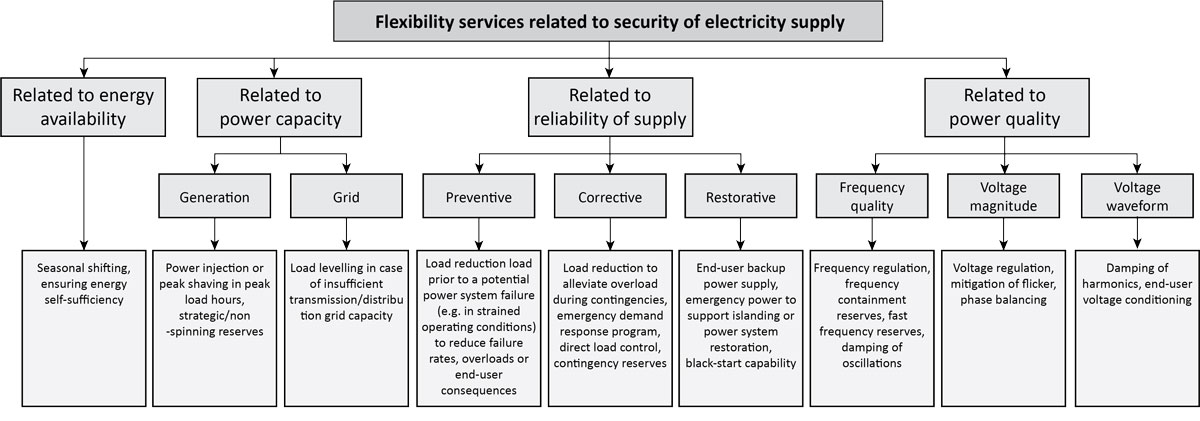
However, flexible resources can also impact security of supply negatively. For instance, the rebound effect for shiftable loads may cause load peaks to be shifted to a later time and potentially become more severe. Another potential issue is related to the interplay between different grid levels. For instance, if flexible electric vehicle charging provides services to the transmission grid level (to positively impact frequency quality, for example), it may nevertheless have a negative impact on other aspects of SoS on a more local level (power quality in the low-voltage distribution grid).
How should one assess the security of electricity supply in the future?
A future power system with more active end-users and distribution grids and more distributed flexible resources puts new requirements on methodologies for assessing SoS. In our review we conclude that to quantify the operational benefits of flexible resources one must simulate how they are activated and provide services during the operation of the power system. Time-sequential simulation is needed to fully capture the time dependence, variability, chronology, and restrictions related to energy storage constraints, rebound effects after demand response activation, etc. Variability and uncertainty also make it more important to consider probabilistic methodologies for quantifying SoS. One should also consider characteristics and operational uncertainties related to the aggregation and activation of flexible resources, including their availability and reliability to respond when needed, as rapidly as needed and for as long as needed.
In the future, parts of the distribution systems may to a greater extent be able to operate in island mode and as microgrids. It challenges the conventional approach to managing SoS if distribution systems and end-users have the option to manage their own security of supply locally (schematically illustrated in Figure 6b) rather than relying on being supplied through a centralized generation and transmission system (Figure 65a). However, some end-users may be more self-sufficient and may value (centralized) security of supply less than others. This raises the issue of more differentiated needs for security of supply in the future.
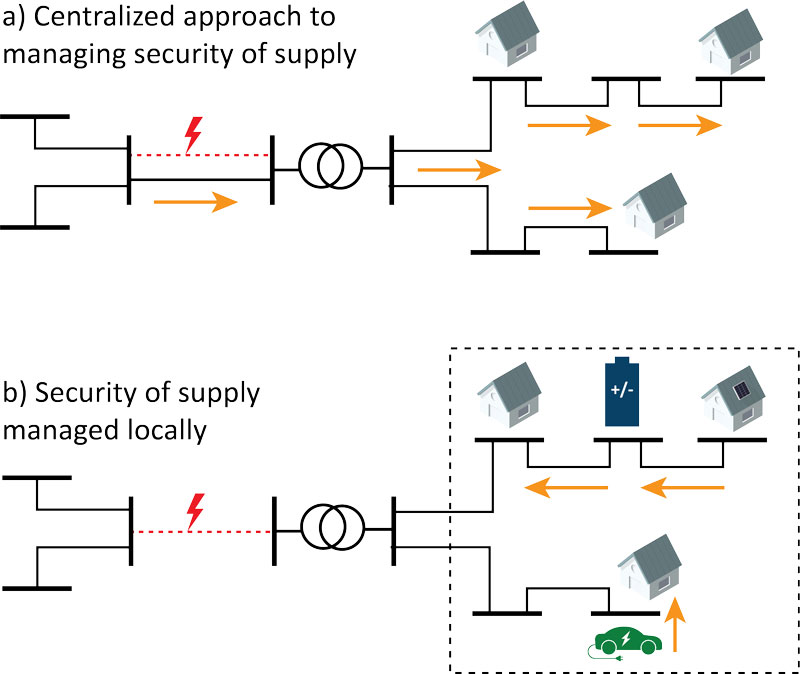
Our review indicates that there is a lack of research taking a holistic view on SoS by comprehensively assessing the impact on multiple aspects of SoS and multiple levels of the power system, considering the interplay of multiple flexible resources. Moreover, existing work often neglects the trade-off between different services: The same resources may be providing simultaneous services for the benefit of different actors and end-users. This raises the question of whether or not a resource will be available for SoS-related services at any given time. If one relies on flexible resources and local solutions to manage SoS, these operational uncertainties introduces new potential vulnerabilities. Such vulnerabilities are important to understand when making the trade-off between solutions to manage security of supply locally and (traditional) centralized solutions to ensuring end-users’ security of electricity supply in the future.
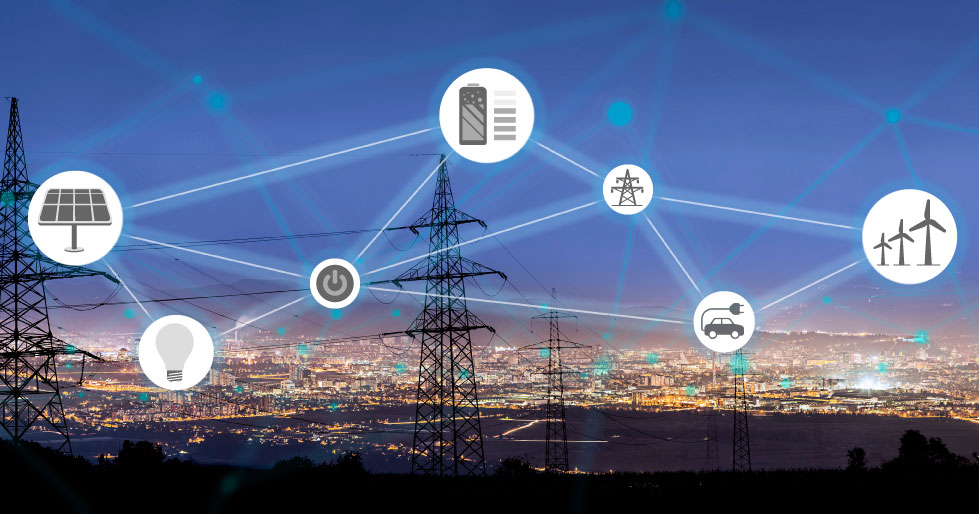









Comments
No comments yet. Be the first to comment!